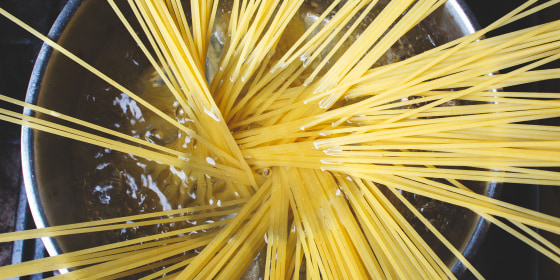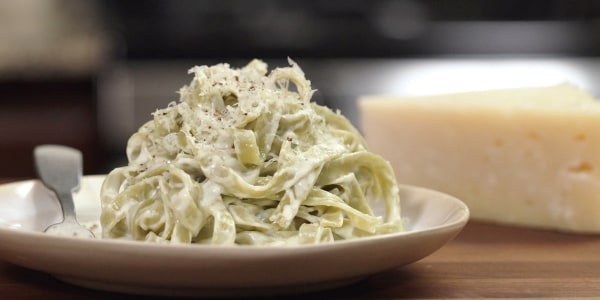Pasta is a dinnertime staple for a very important reason: It just requires the cook to boil water.
However, there are a lot of ways that seemingly simple task could go wrong. Under-salted water can lead to flavorless pasta. A pot that's too small may cause your spaghetti strands to stick together in an inedible glob. And, if you're not paying attention, it's pretty easy to cook pasta way past the desirable point of al dente.
To fix some of our most common pasta problems, TODAY Food turned to "Top Chef" judge and cookbook author Gail Simmons.
"The thing about making pasta and making it well is ... salting your water right when it comes to a boil," Simmons told TODAY during an event for Rao's Homemade.
According to Simmons, a major mistake a lot of home cooks make is salting their pasta water before it comes to a boil. Over time, the salt can cause pitting (the unsightly erosion of metal) in the bottom of your pot. Even though salting the water just as it comes to a boil will momentarily interrupt that rolling boil, it will heat back up right away.
Of course, it's not just when you salt that matters, but also how much salt is used.
"People say you want to salt your water like the sea, but that's not true," said Simmons. "The sea is way more saline."
For the perfect ratio, the TV personality recommends adding two tablespoons of salt to your pot for every pound of pasta.
When it comes to picking the perfect pasta pot, Simmons said it should always be large enough for the pasta (no matter what type you're cooking) to be able to move around freely during a strong boil. Sometimes people choose smaller pots because they want the water to heat up faster, but this may ultimately lead to subpar noodles that don't cook evenly.
Since pasta continues to cook after you remove it from the water, it's important to keep a close eye on it when it's almost done. It's perfectly acceptable — and advisable! — to remove a taster piece from the water to gauge whether the whole pot has been satisfactorily cooked.
Lastly, while many people just discard their salty water after draining their pasta, Simmons recommends keeping it for a myriad of uses. It's usually a good idea to add a little bit back into your sauced pasta dish as the starchy, salty water will enhance the flavor of whatever sauce is being used.
Once the water has cooled, Simmons will often reserve some of it in a jar and save it for a variety of uses. Adding some of that starch-rich water when you reheat cooled pasta will help it taste fresh and it will also help prevent the cold, old noodles from sticking together.
Season 17 of "Top Chef" premieres March 19 on Bravo.














